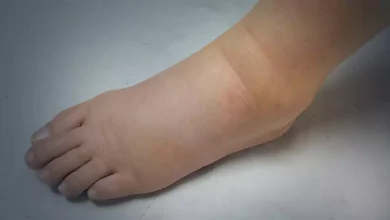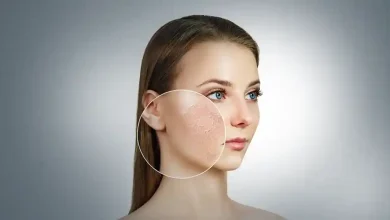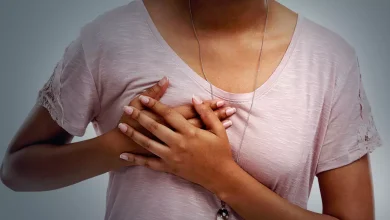All abuot Dupuytren’s Disease
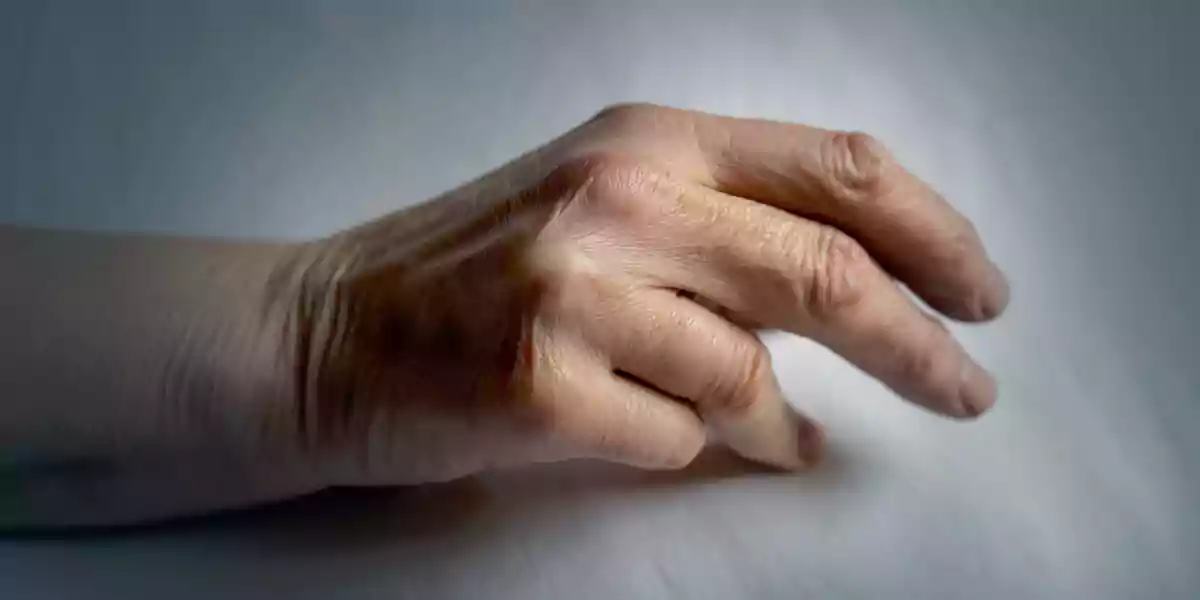
What is Dupuytren’s Disease?
Dupuytren contracture is a deformity of the hand where the joints of one or more fingers cannot be fully straightened and their portability is limited to certain bent positions. It is a disorder of connective tissue, which supports the body’s muscles, joints, organs, and skin and gives strength and flexibility to structures of the body. In particular, Dupuytren contracture results from the shortening and thickening of connective tissues in the hand and usually affects the two fingers farthest from the thumb. This can affect everyday activities that involve using your fingers.
What are the Symptoms of Dupuytren’s Disease?
General symptoms of Dupuytren’s Disease include:
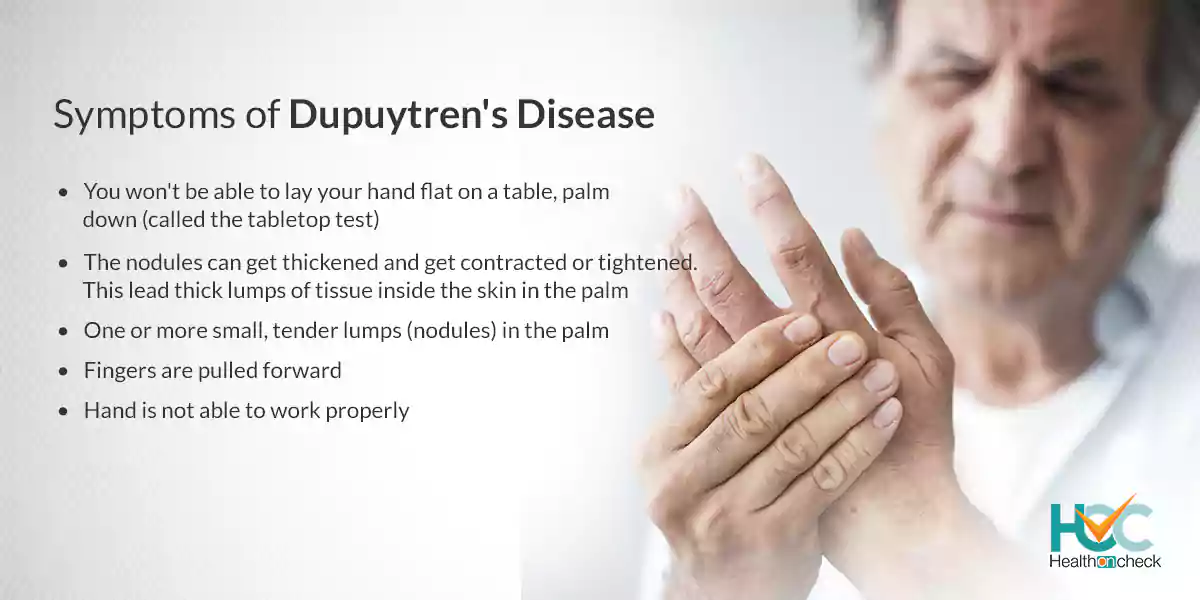
- You won’t be able to lay your hand flat on a table, palm down (called the tabletop test)
- One or more small, tender lumps (nodules) in the palm.
- The nodules can get thickened and get contracted or tightened. This lead thick lumps of tissue inside the skin in the palm.
- Pits or grooves in the skin getting compressed because of the contracted finger. These areas may become very sore and can result in skin loss if they don’t treat.
- Fingers are pulled forward
- Hand is not able to work properly
What are the Causes of Dupuytren’s Disease?
Researchers are not able to find the cause of Dupuytren’s disease but it seems that this condition tends to run in families. Men are more prone to it as compared to women.
What are the Risk Factors of Dupuytren’s Disease?
Risk factors for Dupuytren contracture include:
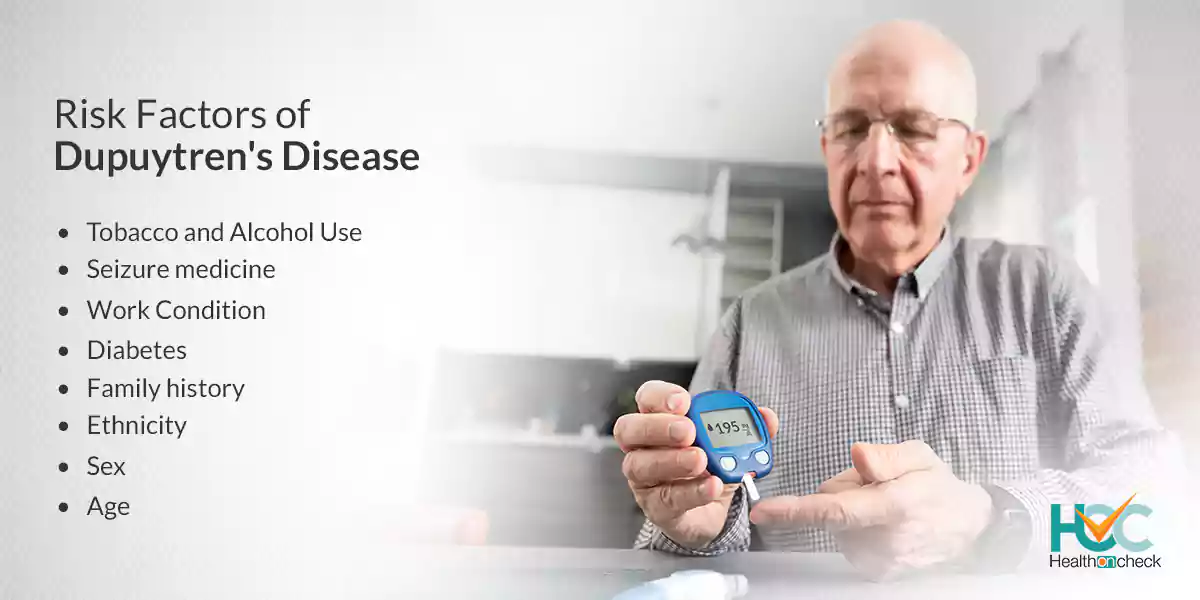
- Age: People above the age of 50 are more likely to suffer from this condition.
- Sex: Men are at more risk to develop Dupuytren than women. In men, symptoms may be worse and progress more rapidly as compared to women.
- Ethnicity: People of Northern European descent are at higher risk of the disease.
- Family history: If you have a family history of Dupuytren’s disease then there are more chances of you developing this disease.
- Work Condition: People who use vibrating tools at their work seem to be more prone to this disorder.
- Diabetes: People with diabetes have a higher risk of Dupuytren contracture.
- Tobacco and Alcohol Use: Smoking tobacco and drinking alcohol both augment the risk of Dupuytren contracture.
- Seizure medicine: It is linked with some medicines used to treat epileptic seizure
What are the Complications of Dupuytren’s Disease?
The main complication of Dupuytren’s disease is that with the passing time, you may find it difficult to use your hand for certain tasks. You may not be able to hold large objects or straighten your fingers.
Some complications may arise after the treatment of Dupuytren’s disease such as:
- Excessive inflammation
- Hematoma
- Ischemic skin necrosis
- Infection
- Granuloma formation
- Transient paresthesia
- Scar contracture
- Persistent proximal interphalangeal (PIP)
- Flexion contracture
- Distal interphalangeal (DIP)
- Hyperextension deformity
- Joint stiffness
- Poor flexion and grip strength
- Late healing and nerve injuries were usually found after transverse incisions
- Flare reaction post surgery is more common in women
How Dupuytren’s Disease is Diagnosed?
In most instances, doctors diagnose Dupuytren’s disease by looking and feeling the hands and tests are not very important.
To diagnose the condition, the doctors compare both hands and check for puckering on the skin of the palms. Pressing parts of the hands and fingers to detect hard knots or bands of tissue also helps to diagnose the problem.
Another way to diagnose Dupuytren’s disease includes putting the palm of the hand flat on a flat surface and if you are not able to totally flatten your fingers means you might be having this condition.
What are the Treatment Options Available for Dupuytren’s Disease?
Usually, treatment is not needed if the disease develops slowly because it does not cause any pain and has almost nil impact on your capability to use your hands for everyday chores.
Treatment is needed when you feel pain and the condition is affecting your daily work. Treatment for Dupuytren’s disease involves getting rid of or breaking apart the cords that are pulling your fingers toward your palm. This can be done in various ways including:
Needling: In this treatment procedure, a needle is needed that is inserted into your numbed skin, to puncture and break the cord of tissue that is contracting the finger. The needling technique has many advantages such as no large cuts to heal and can be done on many fingers at the same time. You need not get admitted in an operating room as it can be carried out in the office setting. But it has got a disadvantage also which includes not being able to do needling in some places in the finger because it can harm a nerve or tendon.
Injections: Injecting certain steroids or a special enzyme, called collagenase, into the hard lump can soften and flatten the lump. These injections are also helpful to relieve pain from the nodules. Injecting collagenase can reduce or even eliminate the contracture for several years.
Surgery: Surgery may be needed for people suffering from severe symptoms to get rid of the tissue that is bending the fingers. Surgery helps in more complete and longer-lasting release than needling and injections but the time of recovery is longer. In some serious cases, surgeons remove all the tissue that may be affected by Dupuytren contracture, including the attached skin. In such instances, a skin graft is required to cover the open wound. This surgery is the most protruding option with the longest recovery time. The contraction of the fingers often returns with time and all treatments for this disorder are mostly temporary.
Living with Dupuytren’s Disease: Dupuytren’s disease most of the time does not cause any pain and you won’t find any problem carrying out your daily activities in earlier stages. But if the condition persists and becomes severe then you may feel pain along with getting problems in carrying out your daily activities because it makes it difficult for you to hold things. Treatments are available to cure this condition but most of the time it comes back so treating this condition is not one time task.
Whom to Consult?
If you experience symptoms of Dupuytren’s disease then make an appointment with your doctor who may refer you to a bone surgeon also known as an orthopedic surgeon. After checking your symptoms the orthopedic surgeon may ask you questions about your family history, any treatment you tried before, when did the symptoms begin, and what medicines and supplements you take for any other illness. After making notes of all these things, the orthopedic surgeon will start the treatment.

